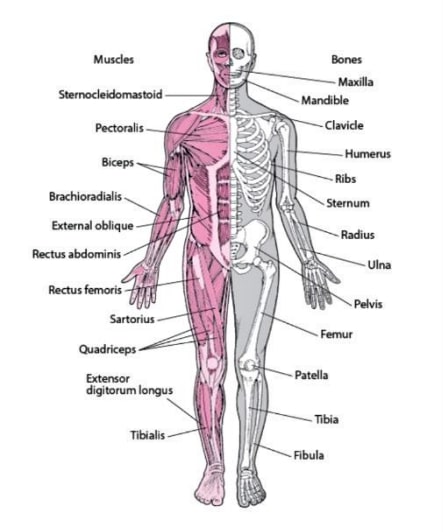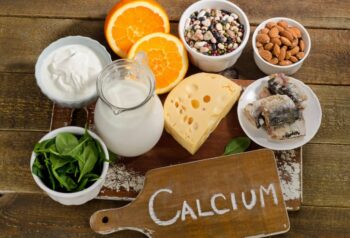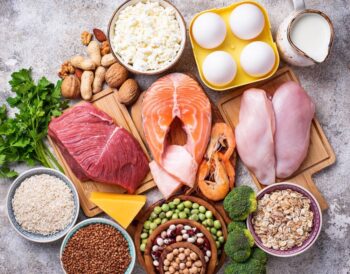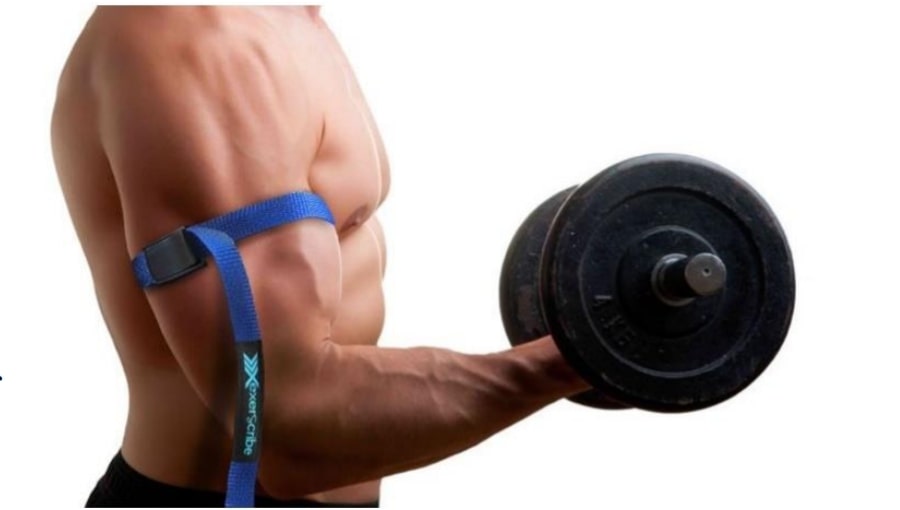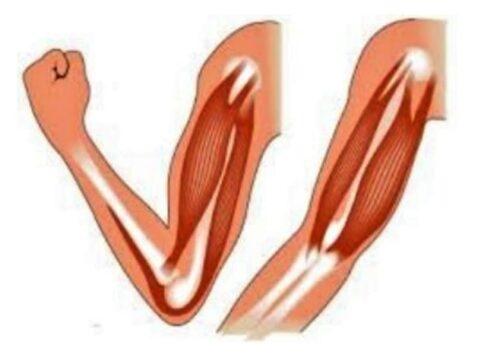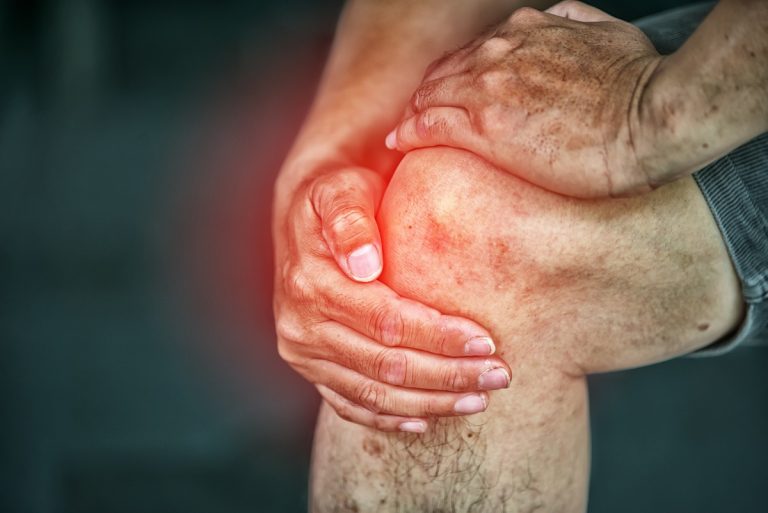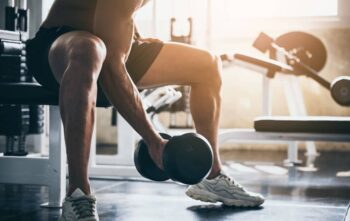
The Musculoskeletal System
The human body is composed of 206 bones and over 600 different skeletal muscles. Each of these muscles is designed to move our bones in a straight line. With a coordinated effort across the body, and with each muscle acting in unison, regular movement occurs (1).
Every muscle within our body is connected to a bone with a soft tissue structure called tendons. It is important to know the structure of muscles to understand how our muscles contract, and then how to build our muscles safely and effectively.
Overall, muscles are made up of bundles of individual muscle fibres which are then grouped again to create the whole muscle. Each of these bundles is surrounded by thin sheets of tissue to allow for the transportation and diffusion of essential nutrients such as proteins and calcium.
They also maintain the structural integrity of the muscle to allow for sustained strength and structural positioning. A diagram of a muscle is illustrated to the side for example. Without these vital structures, we wouldn’t be able to attain all the necessary substances within our muscles such as hormones and proteins that we need to survive (1).
What Is Muscle Hypertrophy?
Hypertrophy is a generalised term when it comes to building muscle, it is important to know the different ways in which hypertrophy can be described. Hypertrophy may refer to the growth of energy and glycogen stores within the muscle (sarcoplasmic) (2), the increase in the size of muscle fibres (hypertrophy), or the increase in the number of muscle fibres (hyperplasia). For this blog, we will be primarily focusing on hypertrophy, and briefly on hyperplasia.
Muscle hypertrophy is also known as the increase in muscle fibre cross-sectional area, accompanied by an increase in muscle volume and mass. Generally speaking, it is the growth of muscle tissue (3). Muscle growth is generally accompanied by increased strength, coordination and power, making it both a great therapeutic tool for rehabilitation and the improvement of athletic performance.
How Do Muscles Grow?
Simply speaking, muscles grow when they are placed under stress (4). Once the small contractile components and the surrounding area of the muscle are stressed, a chain reaction occurs, promoting muscle growth. These chain reactions are currently being researched, but are strongly dependent upon (4):
- Calcium transport
- Satellite cells within the muscle exterior
- Testosterone, human growth hormone, and other important growth hormones
This ultimately leads to an increase in the size of the contractile proteins and the total number of these proteins; in turn, increasing the diameter of the individual muscles fibres and thereby resulting in an increased muscle cross-sectional area.
Additionally, a healthy well-balanced diet is important for the growth of muscles. It is important to include a diet that is high in calcium and protein to allow your muscles the best chance to grow when they are recovering.
Many people often resort to protein supplements to ingest high levels of protein, although this may not be necessary. It may certainly be beneficial for those individuals with dietary restrictions and concerns, but for the large majority of people, if you already ingest a large amount of protein in your diet, protein shakes are not necessary for muscle growth. Therefore, having a good diet is paramount, and will allow you to save money on protein supplements.
What’s the Best Training Strategy for Hypertrophy?
There are many different methods of exercise training, some more beneficial than others for muscle hypertrophy. Traditional exercise for hypertrophy consists of regular progressive resistance training. Other methods of training include aerobic exercise and hypoxic training.
Hypoxic training (better known as blood flow restriction training) is a newly developing field of exercise that involves restricting the amount of oxygen to the muscles with the completion of regular resistance training.
The training consists of using a pressure cuff (between 0-100mmHg) or band around the closest part of a limb to the torso to restrict blood flow to the limb. This form of training has shown to improve the following to a greater extent than just regular resistance training (5):
- Muscle growth
- Muscle strength
- Protein synthesis rates
- Anabolic hormone levels
- Blood flow after exercise
Although all these benefits sound great, you are unable to train the muscles of your torso with this method. Additionally, it may be quite uncomfortable and expert help may be warranted to begin exercising safely in this fashion. This form of training may also provide those with an alternative to exercise at a lower intensity while still gaining the same benefits as those participating at moderate-high intensities (5).
When completing resistance training for muscle hypertrophy, it is best to use compound movements. These exercises will recruit the most muscle fibres at any given time and will generate the most tension/stress within the muscles. You can additionally implement specific single to dual joint exercises to assist in the hypertrophic gain of specific muscles as well.
Although, it is highly recommended to begin your workout with the exercises that recruit the largest muscles groups and involve the largest number of movements, therefore, promoting greater muscle hypertrophy.
Correct Frequency, Volume, Intensity and Sets/Reps for Hypertrophy
Muscle hypertrophy requires a significant amount of muscle stress to elicit a build of musculature. To generate enough stress, 2-3 sets of 6-12 repetitions with a weight between 70-80% of your one-repetition max is warranted (6). Research has also shown that increases in volume over a periodic cycle of training are also needed to experience the most hypertrophy at a given time.
Rest intervals are a major part of the hypertrophic process, distinguishing whether to have shorter rest intervals (the 30s or less) to build up the anabolic stress within the muscles, although compromising muscle strength through each set and repetition, or having longer rest intervals (3 plus mins) that lowers the anabolic stress response but allows for greater strength, is a critical process. Both options have their benefits, therefore research suggests that moderate rest intervals (60-90secs) may work the greatest for overall hypertrophy (7).
Training to failure is also an option for building muscle hypertrophy, as this increases the total anabolic stress within the muscles (8). Although it is beneficial, studies have shown that this may lead to training, therefore, it should be incorporated into a periodised program selectively and with care.
The speed of each contraction is another important variable to consider when building muscle. We can break him down into concentric and eccentric parts of the lift, where concentric is the ‘active’ part of the lift, and eccentric is the ‘relaxing’ part of the lift. The concentric phase of the lift has been shown to generate greater hypertrophy when it is conducted fast, in about 1 second. As the eccentric phase of the lift generally generates the largest amount of muscle fibres and contractile components, taking this part of the lift slower (between 1-3secs), has shown the most benefit for building muscle (4).
Simple Yet Effective Exercises to Begin Building Muscle
As mentioned before, compound exercises recruiting large muscle groups will be most optimum for recruiting the most muscle fibres and gaining the most hypertrophy. A few examples of these exercises include the deadlift, bench press, and lat-pull down. As always, with each of these exercises, it is best to seek advice on correct technique and how to complete the movement safely before attempting with moderate or heavyweights to avoid injury, muscle imbalances and pain.
Deadlift: The deadlift is a large total body resistance exercise that primarily builds muscle in the lower body; more specifically, the glutes, hamstrings and quads. The deadlift is a versatile exercise with a few variations including the Romanian Deadlift and Sumo Deadlift. Both of these exercises are great for building total-body strength, primarily in the lower body; although with different techniques and training importance.
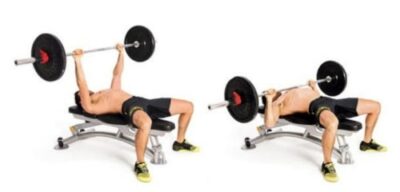
Lat Pull-Down: The lat pull-down exercise is a large upper body resistance exercise that primarily focuses on the latissimus dorsi of the back and biceps of the arms. The is a relatively simple exercise that focuses on the largest muscle of the back. This exercise is relatively easy and is completed in machine/cable equipment in the gym. Most, if not all gyms will have this equipment easily available.
References
- https://www.britannica.com/science/human-muscle-system
- https://www.healthline.com/health/muscular-hypertrophy
- https://www.sciencedirect.com/topics/medicine-and-dentistry/muscle-hypertrophy
- Schoenfeld BJ. The mechanisms of muscle hypertrophy and their application to resistance training. The Journal of Strength & Conditioning Research. 2010;24(10):2857-72.
- Takarada Y, Takazawa H, Sato Y, Takebayashi S, Tanaka Y, Ishii N. Effects of resistance exercise combined with moderate vascular occlusion on muscular function in humans. Journal of applied physiology. 2000.
- Kraemer WJ, Adams K, Cafarelli E, Dudley GA, Dooly C, Feigenbaum MS, et al. American College of Sports Medicine position stand. Progression models in resistance training for healthy adults. Medicine and science in sports and exercise. 2002;34(2):364-80.
- Toigo M, Boutellier U. New fundamental resistance exercise determinants of molecular and cellular muscle adaptations. European journal of applied physiology. 2006;97(6):643-63.
- Willardson JM. The application of training to failure in periodized multiple-set resistance exercise programs. Journal of Strength and Conditioning Research. 2007;21(2):628

